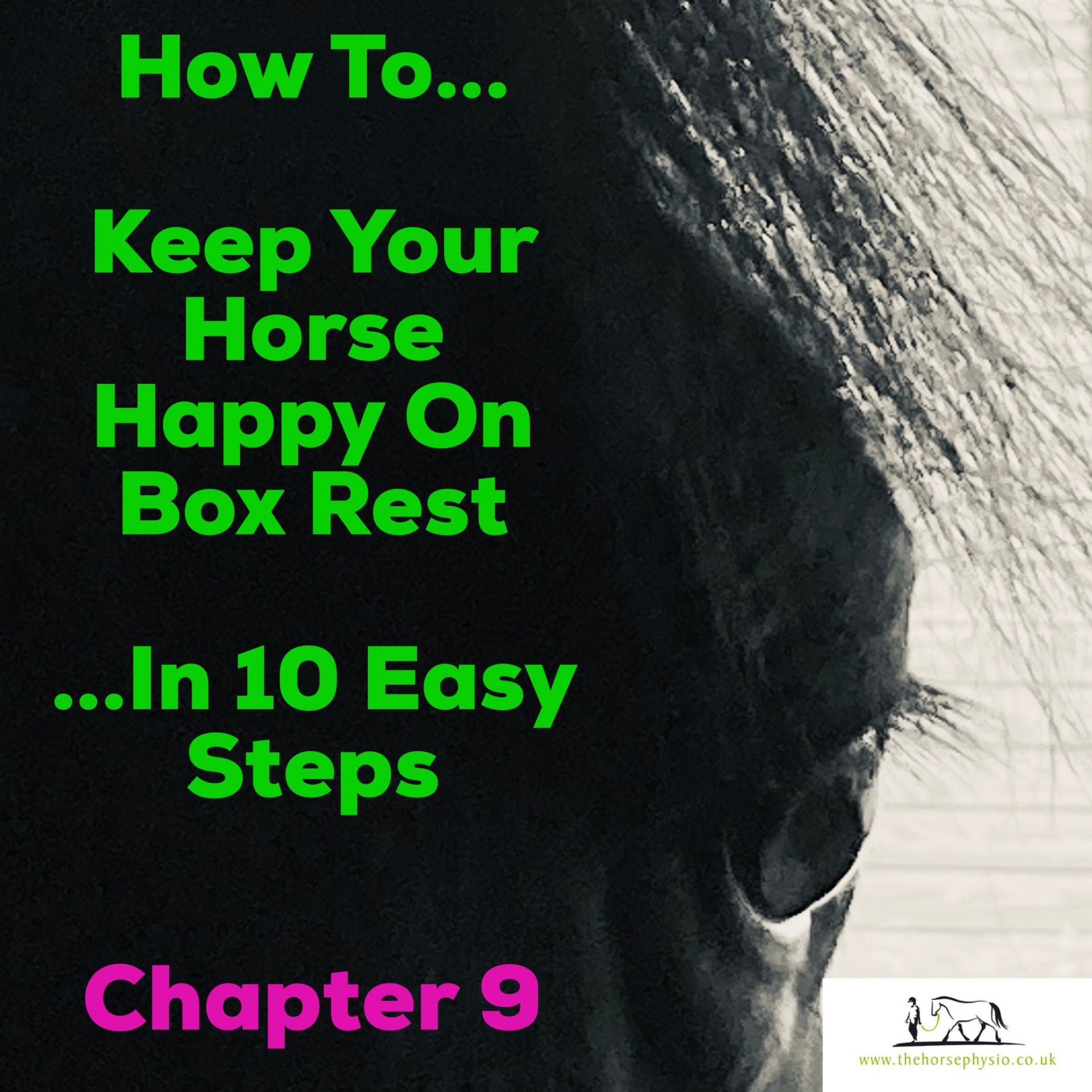Feet and teeth
As a physio, these are not my area of expertise. However, if I had a horse on box rest, the farrier and equine dental technician would definitely be part of the ‘team’ looking after him. Much is going to depend on the reason for the box rest. Your farrier may already be involved in treating the problem alongside the vet. Depending on the problem and how long the box rest is for, you may want to discuss with your vet and your farrier the option of taking your horse’s shoes off. Alternatively remedial farriery or remedial trimming may be a part of the rehabilitation program to get your horse back to optimal health.
The teeth are used differently if the horse is grazing grass compared to if he’s eating from a hay net, ground feeder, or loose hay from the floor. Haynets are definitely not ideal. For a start the horse is eating from an unnatural height, meaning that the angle of the jaw whilst puling the hay out leads to different wearing of the teeth compared to a horse eating grass from the ground. Also, and this makes me cringe from a physio point of view, he is continually twisting his neck in a short, sharp action, which creates a high risk of repetitive strain injury. This is similar to repetitive strain injuries like tennis or golfers elbow. There are several ground feeders available. The evidence suggests that putting haynets at different heights in different places in the stable is beneficial. That way the horse is using his neck and jaw at different angles, and he’s moving around the stable a little to get his food.
If weight management and wastage is not a problem, then the simplest solution of course is to feed your horse loose hay on the ground!
© Sue Palmer, The Horse Physio 2021
Treating your horse with care, connection, curiosity and compassion
